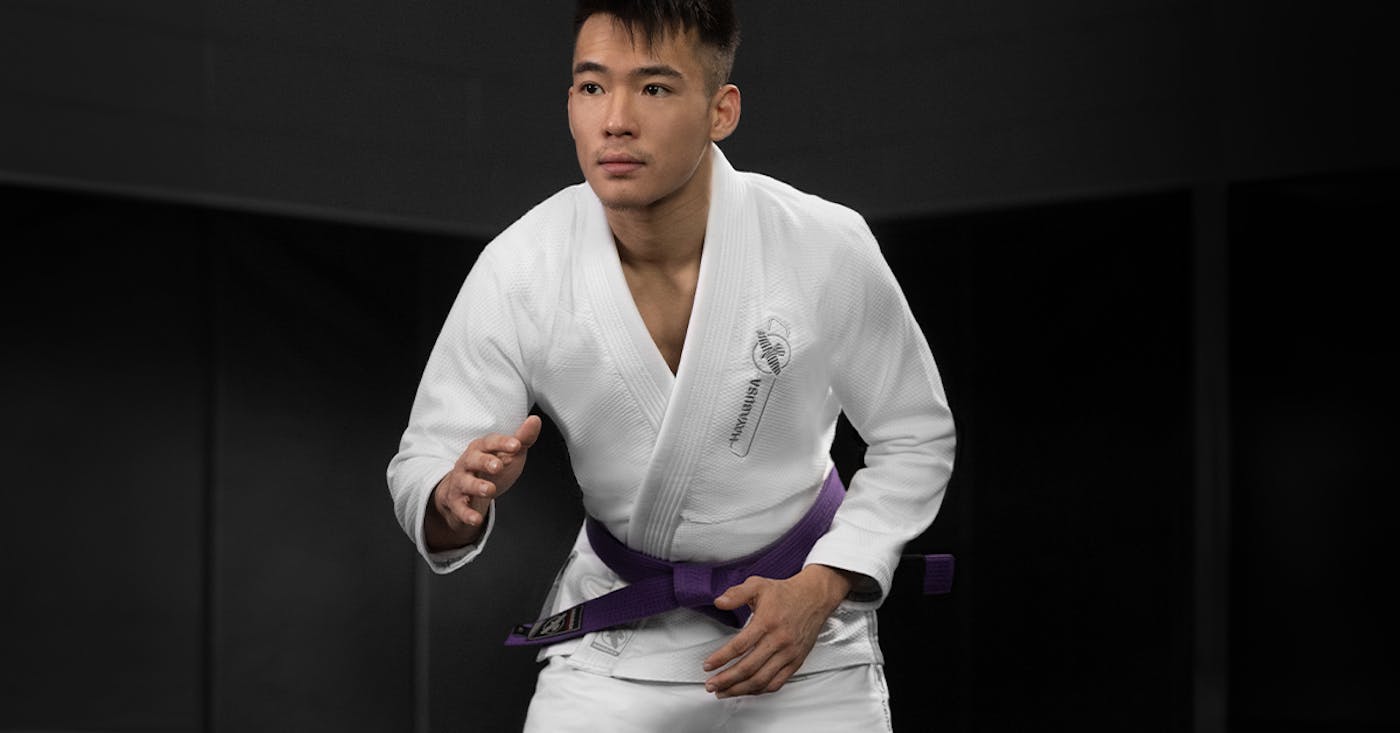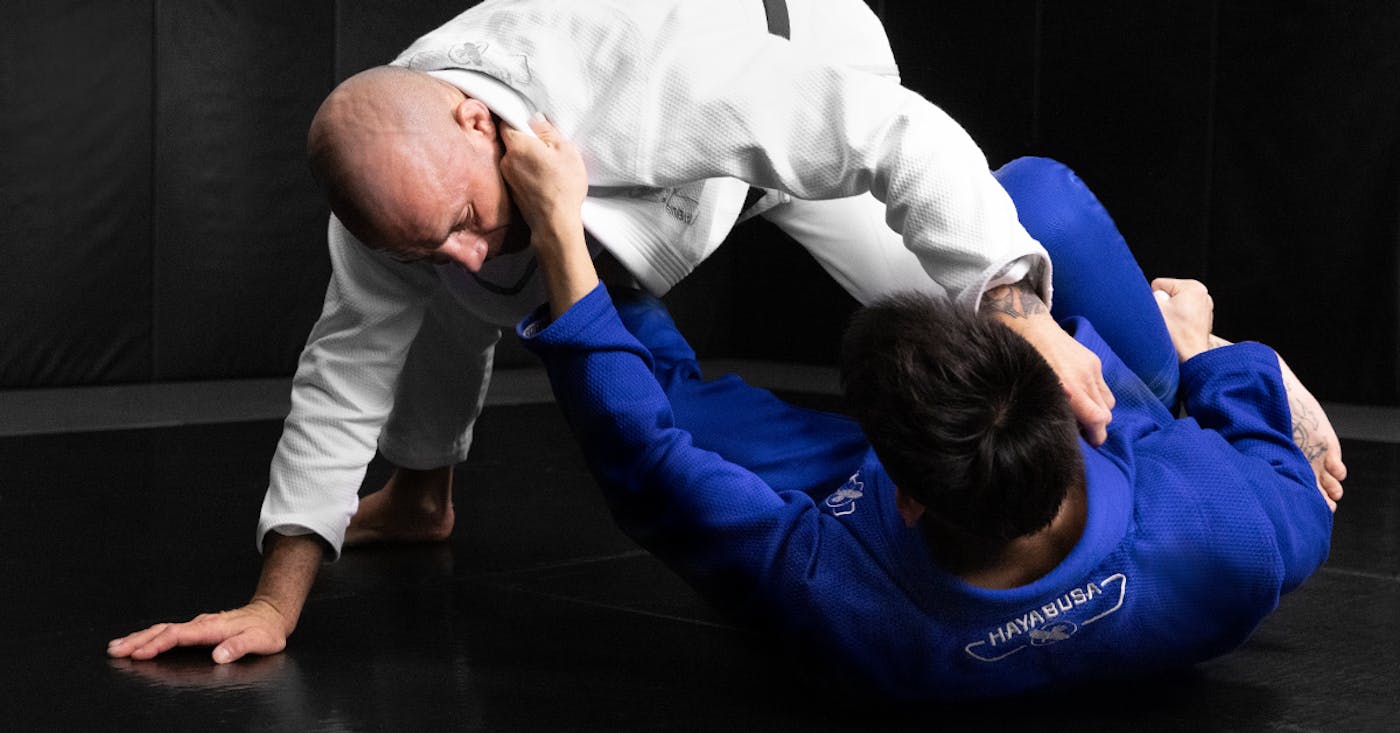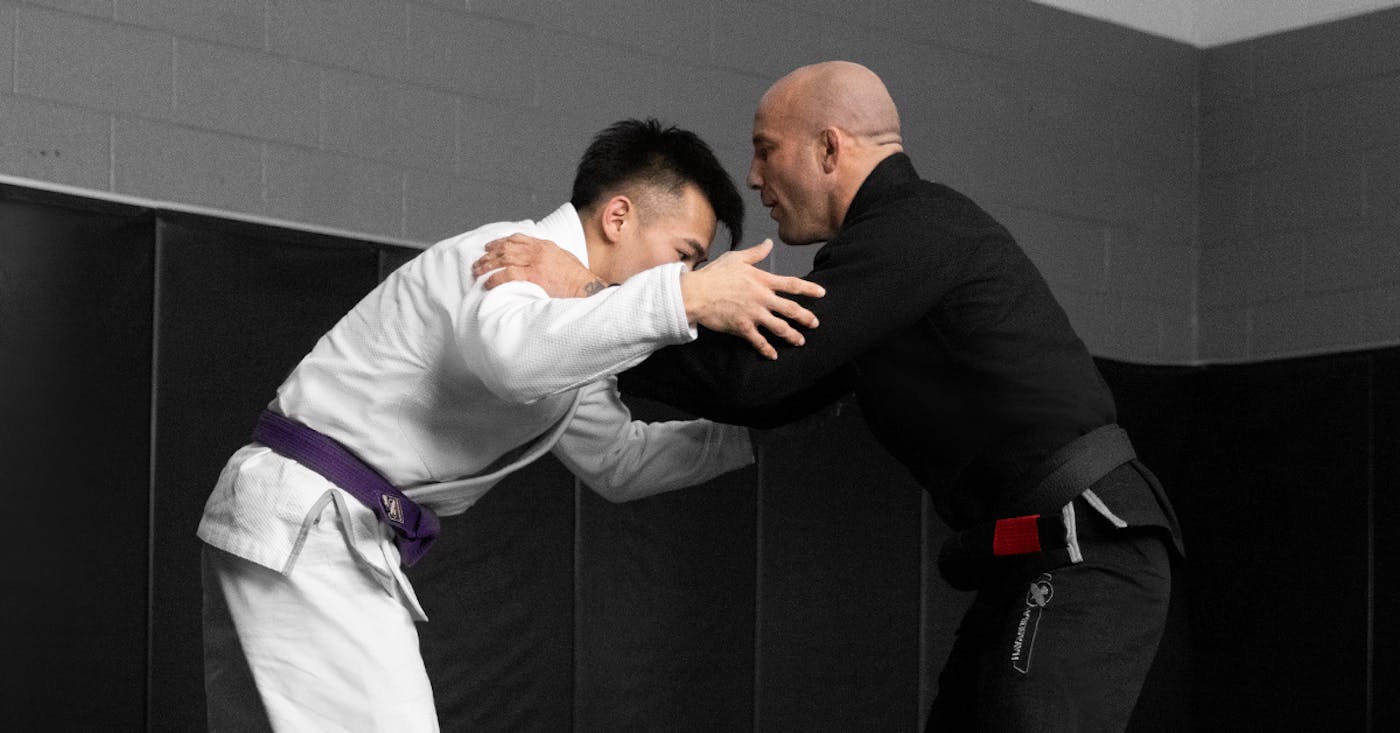The Brazilian Jiu-Jitsu (BJJ) journey is a rewarding one. It allows everyone to earn a spot at the highest level by focusing on leveraging techniques and skills over strength and stature.
BJJ has been popular for decades. While it began as a means of self-defense, it has since evolved into a worldwide community of fighters focused on physical fitness, mental fortitude, and a spirit of respect and discipline.
As a beginner, it’s common to have concerns or misconceptions about what’s required to be a BJJ fighter. You may wonder if you’re strong enough or may be afraid of getting hurt.
To ease the self-doubt, we’re providing a BJJ for beginner’s guide to help you as you enter this new world of combat. In this blog, we’ll take you through what to expect from BJJ training, introduce a few of the main terminology and concepts, and the importance of securing the best BJJ gear.

Your First BJJ Class: What to Expect
As a beginner, the question may be where and how to start BJJ. A group class is a good way to familiarize yourself with the techniques with others also at the introductory level in a friendly environment.
The first BJJ class can feel intimidating. Yet, once you feel the energy and camaraderie among your fellow fighters, you’ll soon see why BJJ is such a popular sport.
A typical BJJ class structure involves a few minutes of warm-up followed by technique instruction. Don’t worry – you won’t be given all the moves and skills to learn at once.
You’ll lead up to them as the class goes on and repeat them to get familiar with how they feel.
After the warm-up and skill demonstration, there will be drills to encourage you to practice movements with a partner as instructors offer feedback regarding form.
Along with the standard format of BJJ classes, here are some other answers to frequently asked questions about what to expect as a first-timer.
What Is Basic BJJ Etiquette?
A core part of BJJ is a standard level of respect for yourself and your opponent. This includes maintaining good hygiene, including a clean uniform and gear, as well as bowing to your sparring partner before engaging in combat.
BJJ is about refining techniques and harnessing power rather than aggressively trying to defeat the other person. Though it’s a fight, there are rules to follow and a specific level of control that’s assumed regardless of whether you are training jiu-jitsu vs. muay thai or another type of combat sport.

What BJJ Terminology Should I Know?
Attending BJJ classes will help you familiarize yourself with the terminology. However, to prepare before the first session, here are a few key terms to keep in mind:
- Guard - The position you take to attempt to control your opponent by using your ankles, knees, and hips to prevent them from advancing
- Mount - Involves sitting on your opponent’s torso with your knees on the ground facing toward the opponent’s head
- Roll - The act of sparring or grappling with a BJJ partner
- Hook - Wrapping your legs around an opponent’s torso during a roll to prevent them from escaping.
- Submissions - In every BJJ match, the goal is to have your opponent concede by tapping out or “submitting.”
- Sweep - An attack that changes someone in a weak position into a more dominant position.
Do I Need to Wear a Gi?
Wearing a BJJ gj is recommended, especially for beginners. This robe and pants uniform helps to protect the body against bruises, rashes, and burns when sparring and grappling on the mat.
Additionally, BJJ levels are marked by accompanying gi belts. Jiu-jitsu belt colors signify your skill level and showcase your commitment.
Beginners always start with a white belt before eventually advancing to blue and beyond, as decided by your instructor.
Are All BJJ Gyms the Same?
No. Some BJJ gyms are geared toward professionals training for competition. However, the majority of gyms offer spaces accessible to everyone. There is usually an area for beginner classes and instruction and a separate space for those training at more advanced levels.
Research a gym’s reputation and visit a few different ones before committing to one. Keep in mind, most gyms offer various class levels, so confirm you’re signed up for a BJJ class for beginners. This will ensure you are learning and sparring with others on the same level.
The gym atmosphere and instructor can impact your experience, so find one that fits your style.

BJJ Beginner Tips When Training
Taking the first step in any new endeavor can feel scary, but know every seasoned fighter has been in your shoes before.
For a boost of encouragement as you go from a beginner white belt to an intermediate blue, here are a few tips to keep you motivated:
- Keep consistent. You’re not going to master the techniques in one day, but the more you train, the better you will become. It takes showing up day in and day out and practicing patience with yourself to have everything click into place.
- Set realistic goals. Even beginners won’t all start at the same place, so be realistic about your end game. Do you eventually want to compete or are you more focused on having fun with a new fitness routine? Your objective will determine your goals and the pace of your training.
- Track your progress. Measure your progress over time and give yourself credit when you improve. Whether that’s in how fast you move, the accuracy of your skills, or how regularly you’re going to the gym, there are ways you can measure success.
- Give it a rest. BJJ training is intense, which means you must also give your body enough rest to prevent injury and perform better. Also, as a beginner, you’ll be working new muscles which will need ample recovery as you get stronger.
Hayabusa Essential Gold Weave Jiu-Jitsu Gi

Hayabusa Ascend Lightweight Jiu Jitsu Gi

Hayabusa Ascend Lightweight Jiu Jitsu Gi

Marvel's The Punisher Jiu Jitsu Gi

Choosing the Best BJJ Gi for Beginners
The comfort, performance, and durability of your BJJ gi will instill confidence every time you step up to the mat. There are various types of gi materials, some heavier than others.
The best BJJ gi for beginners is one with soft, lightweight, breathable fabrics. Hayabusa strikes the perfect balance of comfort and construction when designing gis and other jiu-jitsu gear.
In addition, it's known for incorporating specialized features like reinforced lapels and rip-stop pants to instill maximum durability. To preserve the integrity of your BJJ gi, you’ll want to wash your gi after every use either by hand or on the gentle cycle.
This will prevent fabric shrinkage and deterioration. The uniform should be form-fitting – not too loose, not too tight. You want to be able to move without restriction but not have the gi so loose that it becomes a distraction.
Start Your BJJ Journey Today
Setting forth on the jiu-jitsu path is exciting. Use this BJJ for beginners guide as you prepare for your first training session, and know sometimes the hardest part is simply showing up.
Soon you’ll experience how rewarding it feels as you get quicker, stronger, and more refined in your skill level and technique. Plus, a strong sense of community with fellow fighters can ignite your purpose and self-empowerment as you train.
As you continue your journey from white to blue, explore Hayabusa's BJJ gi collection and other BJJ gear for beginners that will help you look and feel like a fighter.




